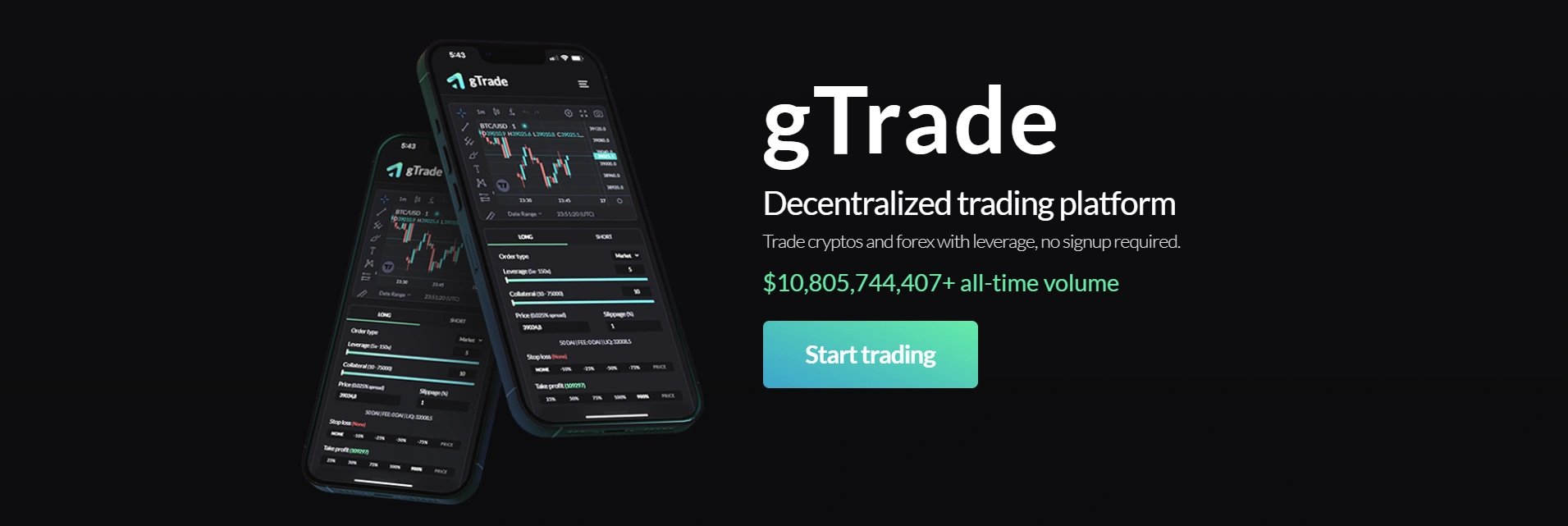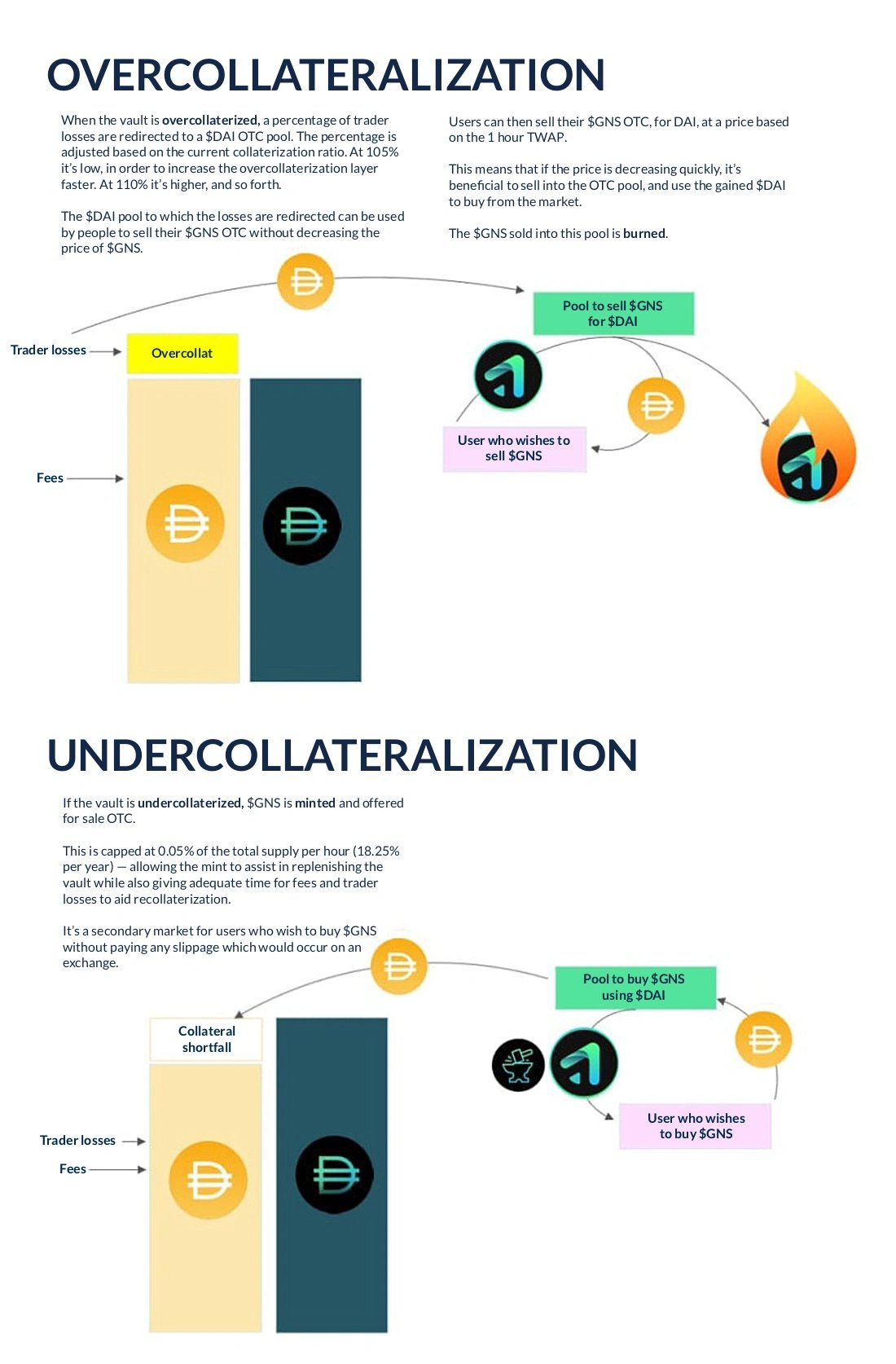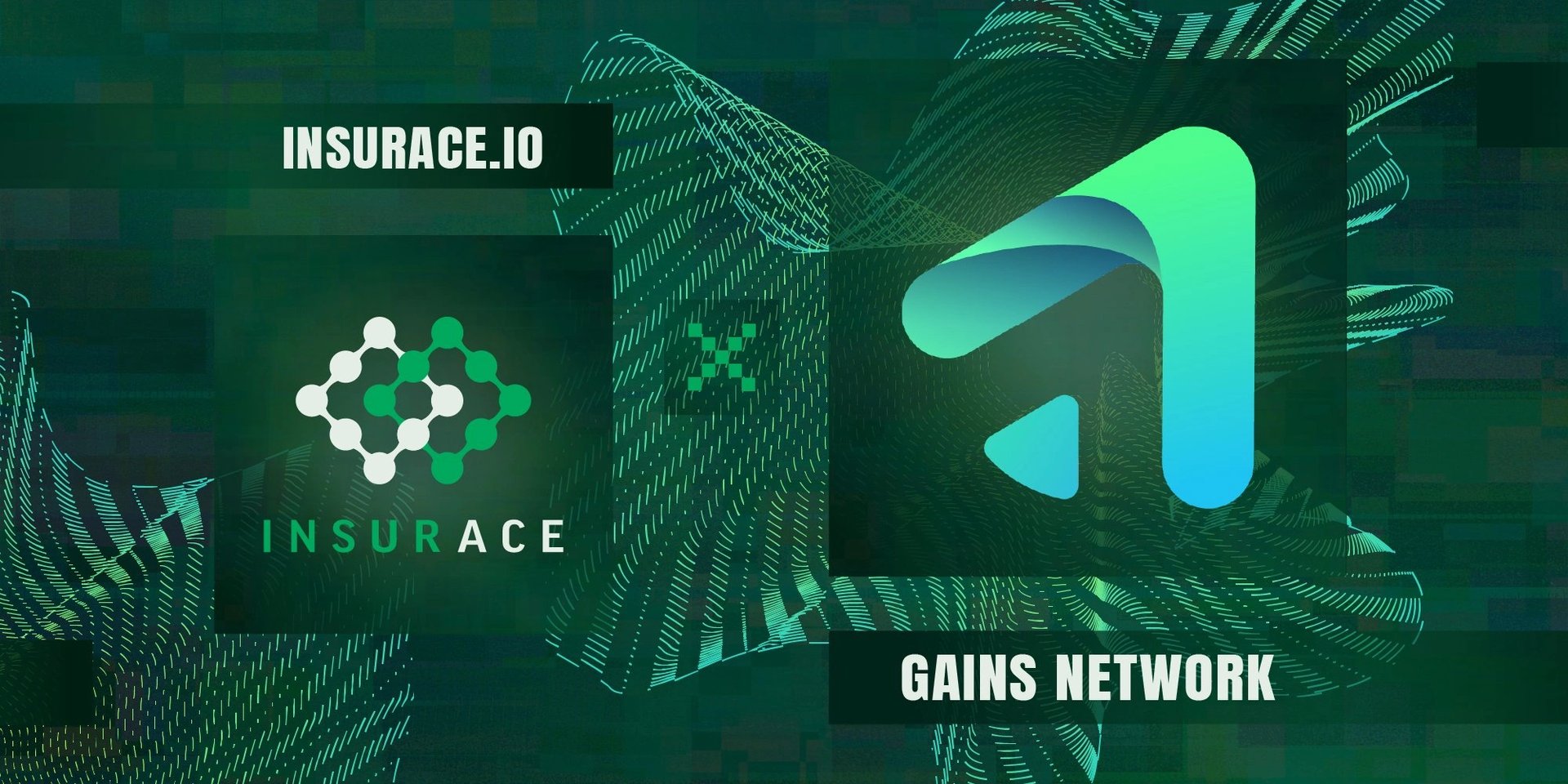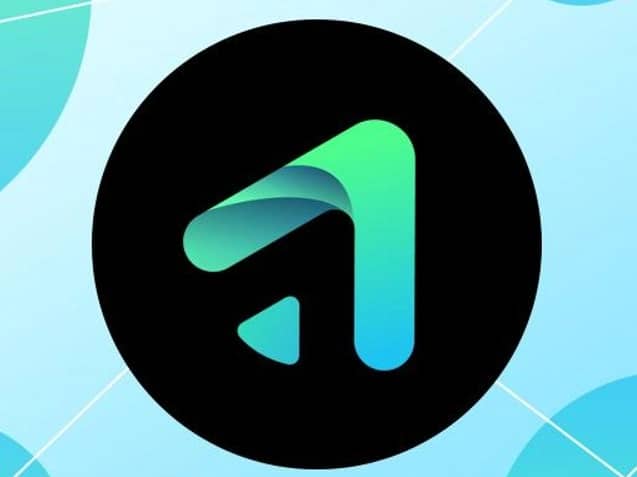위키 구독하기
Share wiki
Bookmark
Gains Network
Gains Network
**게인즈 네트워크(Gains Network)**는 여러 블록체인 네트워크에서 운영되는 합성 파생상품 및 레버리지 거래에 중점을 둔 분산형 거래 플랫폼입니다. 독립적인 감사 및 버그 바운티 프로그램을 통해 보안을 강조하여 DeFi 생태계 내에서 사용자 위험을 완화하는 것을 목표로 합니다. [1]
개요
게인즈 네트워크(Gains Network)는 사용자가 레버리지를 이용하여 암호화폐 및 외환을 거래할 수 있는 탈중앙화 거래 플랫폼입니다. 레버리지는 차입 자본을 이용하여 금융 자산을 거래하는 것을 의미합니다. 이 플랫폼은 미래의 탈중앙화 금융 생태계를 구축하는 것을 목표로 합니다. 게인즈 네트워크는 폴리곤 블록체인 상에서 첫 번째 탈중앙화 레버리지 거래 플랫폼인 gTrade를 출시했습니다. 네트워크는 gTrade의 고유한 아키텍처가 경쟁 플랫폼보다 자본 효율성이 더 높다고 주장합니다. [2]
게인즈 네트워크는 사용자에게 보상 풀을 제공하여 거래 경험을 향상시키고, 시스템 복원력을 높이며, 자본 효율성을 증대시킵니다. 두 가지 보상 풀은 플랫폼 거래량에 따라 보상을 받을 수 있는 DAI 볼트와, 폴리곤 메인넷에서만 이용 가능하며 GNS 및 dQUICK 보상을 제공하는 GNS/DAI 풀이 있습니다. 스테이킹 LP에 대한 보상입니다. 게인즈 네트워크는 생태계의 마스터 키 역할을 하는 5가지 유형의 NFT를 제공하며, 총 1,500개의 NFT가 브론즈 키, 실버 키, 골든 키, 플래티넘 키, 다이아몬드 키 등 다양한 등급으로 나뉩니다. [2]
gTrade 플랫폼
게인즈 네트워크의 gTrade는 자금에 대한 완전한 보관 권한을 제공하는 탈중앙화 거래 경험을 제공하며, 예치 또는 가입이 필요 없습니다. 이 플랫폼은 사기성 wicks를 방지하기 위해 중간 현물 가격을 사용하며, 슬리피지(slippage)가 없는 주문 실행을 보장합니다. 사용자는 암호화폐, 외환, 및 원자재를 높은 레버리지로 거래할 수 있습니다. 암호화폐의 경우 최대 150배, 외환의 경우 1000배, 원자재의 경우 250배까지 가능하며, 모두 경쟁력 있는 수수료로 제공됩니다. gTrade는 100% 온체인 거래 실행을 통해 투명성과 탈중앙화를 보장하며, 3년 이상의 사용자 피드백을 바탕으로 사용자 경험을 제공합니다. [3]
gTrade의 거래 엔진은 주문장이나 각 쌍에 대한 개별 유동성에 의존하지 않고 모든 거래 쌍에 대해 gToken 금고를 사용하므로 100배 이상 자본 효율성이 높습니다. 차입 레버리지 대신 합성 레버리지가 사용되므로, 사용되는 레버리지에 따라 자본 효율성이 더욱 향상됩니다. gTrade는 실시간 맞춤형 체인링크 탈중앙화 오라클 네트워크(DON)를 사용하여 주문형 온체인 현물 가격을 제공하며, 이러한 오라클 네트워크의 첫 번째 메인넷 배포를 나타냅니다. [3]

gTrade 크레딧
gTrade 크레딧은 2024년 4월에 도입된 수수료 할인 프로그램으로, 지난 30일 동안의 거래량에 따라 트레이더에게 보상을 제공하도록 설계되었습니다. 트레이더는 개시 및 종료된 각 거래에 대해 크레딧을 적립하며, 공정성을 보장하기 위해 다양한 자산 클래스에서 정규화됩니다. 이러한 크레딧은 누적되어 최대 40%까지 개시 및 종료 수수료 할인을 제공하는 계층별 수수료 할인을 해제합니다. 이 프로그램은 대여 수수료와 같은 시간 기반 수수료에는 할인을 적용하지 않습니다. 트레이더가 크레딧을 누적함에 따라 더 큰 할인을 받을 수 있는 계층으로 이동하여 지속적인 거래 활동을 반영합니다. [4]
상장 토큰
- Lista DAO
- ZKsync (지케이싱크)
- Aethir (에시르)
- IO.NET (아이오넷)
- BRETT (브렛)
- Renzo Protocol (렌조 프로토콜)
- Meson Network (메손 네트워크)
- Safe (세이프)
- Saga (사가)
- Parcl Protocol (파클 프로토콜)
- Omni Network (옴니 네트워크)
- Toncoin (톤코인)
- Pendle (펜들)
- Bittensor (비텐서)
- Zeus Network (제우스 네트워크)
- Tensor (텐서)
gToken 볼트
gToken 볼트는 ERC-4626 표준을 준수하며 기초 ERC-20 자산(예: DAI의 gDAI)의 지분을 나타냅니다. 이 볼트는 모든 플랫폼 거래의 상대방으로 작용하며, 수익은 볼트에서 지급되고 손실은 예치됩니다. 그 대가로 볼트는 거래 수수료의 일부를 얻어 gToken 보유자에게 배분하고, 이는 그들이 스테이킹을 유지하도록 유도합니다. [5]
볼트의 담보는 트레이더의 손익(PnL)에 달려 있습니다. 획득한 수수료가 지급액을 초과하는 한, 스테이커는 양의 수익률을 얻게 되며, 이러한 추세는 2년 이상 유지되었습니다. 이 프로토콜은 이러한 균형을 유지하기 위한 위험 관리 조치를 갖추고 있습니다. 전체 PnL이 음수일 경우, 볼트는 해당 자금으로 버퍼를 생성하여 스테이커와 프로토콜을 미래의 불일치로부터 보호합니다. 에포크 시스템은 미결 PnL의 스냅샷을 캡처하여 실제 담보율을 근사치로 계산하고 위험을 최소화합니다. [5]
gDAI 볼트
gDAI 볼트는 불균등한 위험 분산 및 불일치하는 인센티브와 같은 이전 DAI(다이) 볼트의 문제점을 해결하고 효율성 및 위험 관리 향상에 중점을 둡니다. DAI(다이) 스테이커의 소유권을 나타내는 ERC-20 토큰인 gDAI를 중심으로 구축된 이 볼트는 수익률 자산에 대한 ERC-4626 토큰화된 볼트 표준을 따릅니다. 이 설계는 사용자와 개발자의 구성 가능성을 단순화합니다. [6]
gDAI는 현재 가격으로 주조(민팅)되고 소각(버닝)되며, 토큰 가격에 영향을 미치지 않습니다. gDAI와 DAI(다이) 간의 비율이 알고리즘 방식으로 변하는 환율 모델을 사용하여 모든 스테이커 간에 손실과 위험이 고르게 분담됩니다. 이 모델을 통해 프로토콜은 유동성(리퀴디티) 위험이 높은 기간 동안 강력한 재정적 인센티브를 구현할 수 있습니다. gDAI의 가격은 각 에포크 시작 시 개방된 거래의 PnL 값과 누적된 DAI(다이) 보상에 따라 결정됩니다. [6]
gToken
gTokens are ERC-20 tokens representing ownership of the underlying asset, with their exchange rate changing in real time based on accumulated fees and trader PnL (both open and closed). The vault comprises two components: the staked asset, representing 100% collateralization, and the over-collateralization (OC) layer, anything beyond 100%. For instance, a vault at 110% means the OC is 10%. [5]
The OC layer serves as a buffer between traders and lenders, with profits and losses affecting the OC as long as it exists. The vault can be either over-collateralized (>=100%) or under-collateralized (<100%). In an over-collateralized state, a portion of trader losses is diverted to a pool where users can sell GNS for the asset over-the-counter (OTC) using the 1-hour TWAP, avoiding slippage and price impact. The sold GNS is then burned to counteract any minting when under-collateralized. [5]
In an under-collateralized state, GNS is minted and sold OTC for the asset to replenish the vault. A maximum of 0.05% of the total GNS supply is minted every 24 hours (18.25% per year). Both minting and burning are decentralized and occur only when someone interacts with the vault. [5]

gNFT
gNFT는 잠긴 gToken 주식의 소유권을 나타내는 ERC-721 토큰입니다. 이러한 gToken은 대출자가 선택한 잠금 기간에 따라 할인된 가격으로 구매됩니다. 잠긴 gToken은 지정된 잠금 기간이 끝나면 해제할 수 있습니다. [5]
에포크 시스템
에포크 시스템은 탈중앙화된 볼트에 공개 손익(PnL) 데이터를 제공하여 담보율(collateralization ratio)(https://iq.wiki/wiki/collateralization-ratio)에 대한 이해도를 높입니다. 체인에서 실시간으로 공개 손익을 계산하는 것은 너무 많은 계산 비용이 소요됩니다. 에포크 시스템은 두 가지 상태로 작동합니다: [5]
- 출금 기간: 공개 손익 값을 수신하기 전 기간으로, 스테이커가 요청 및 출금과 같은 출금 관련 작업을 수행할 수 있습니다.
- 공개 손익 기간: 에포크가 종료되기 전 기간으로, 프로토콜이 오라클에서 공개 손익 스냅샷을 요청합니다. 오라클 네트워크에 여러 요청이 이루어지며, 중앙값을 요청 기간에 걸쳐 평균합니다. 이 결과 손익 값은 다음 에포크에 사용됩니다.
인출 잠금
볼트 보안을 강화하고 PnL 변동의 프런트러닝을 방지하기 위해 자산은 즉시 인출되는 것이 아니라 요청 시스템을 통해 인출됩니다. 인출 기간은 볼트의 담보율에 따라 달라지며, 스테이커는 비율에 따라 요청 후 1, 2 또는 3 에포크를 기다려야 합니다. 스테이커가 인출 기간을 놓치면 새 요청을 제출해야 합니다. [5]
GNS 토큰
GNS 토큰($GNS)은 유동성 효율을 높이고, 자원을 최적화하며, 생태계 참여자에게 양질의 거래 경험과 수익을 제공하도록 설계되었습니다. 처음에는 이더리움에서 $GFARM2 토큰으로 출시되어 ETH 및 GFARM2/ETH LP 풀에서 공정하게 배포되었고, 나중에 Polygon으로 브리지되고 1:1000 비율로 분할되어 $GNS가 되었습니다. 유틸리티 토큰인 GNS는 ERC-20 표준을 따르며 총 공급량은 38,500,000 GNS이고 최대 공급량은 100,000,000 GNS입니다. [7]
$GNS는 오라클 봇과 제휴사에 대한 민팅 보상을 통해 볼트 유동성을 지원하고, 볼트 내 자산 안정성을 유지하며, 과다 담보를 지원합니다. 민팅 및 소각 메커니즘을 통해 gToken 볼트의 균형을 맞추며, 볼트는 gTrade 거래에 대한 단기적인 상대방으로, $GNS는 장기적인 상대방으로 작용합니다. 이 메커니즘은 향후 대규모 투자자에 의해 초기 지지자들의 플랫폼 이익이 희석되는 것을 방지하여 공정성을 보장합니다. [7]
$GNS는 프로토콜 거버넌스에서도 중요한 역할을 합니다. gTrade에 의해 생성된 유기적인 디플레이션을 통해 10% 이상의 토큰 공급량이 소각되었습니다. [7]
GNS 스테이킹
스테이킹된 $GNS 토큰은 플랫폼 수수료로 생성된 보상을 얻을 수 있으며, 각 거래의 기본 담보물로 지급됩니다. 현재 지원되는 담보물에는 $USDC, $DAI, 그리고 $WETH가 포함됩니다. 보상은 해당 체인의 플랫폼 수익에서 발생하므로, Arbitrum(아비트럼)에서 $GNS를 스테이킹하면 Arbitrum(아비트럼)의 거래에서 보상을 얻게 되고, Polygon(폴리곤)도 마찬가지입니다. [8]
시장 주문 수수료의 62.5%와 지정가 주문 수수료의 57.5%가 $GNS 스테이킹에 할당됩니다. 거래의 70%가 시장 주문이므로, 평균적으로 모든 주문 수수료의 약 61%가 $GNS 스테이킹으로 이동합니다. $GNS 스테이킹에는 시간 제한이 없으므로 언제든지 출금할 수 있습니다. 보상은 거래자들이 거래를 열고 닫는 데 사용하는 담보물을 기준으로 실시간으로 발생합니다. [8]
파트너십
사용 가능한 체인
- Polygon (폴리곤)
- Arbitrum One (아비트럼 원)
InsurAce (인슈어에이스)
2022년 3월 2일, Gains Network는 InsurAce와 파트너십을 맺어 자사의 $DAI 거래 금고에 대한 보험 보장을 확보했습니다. InsurAce는 DeFi 사용자의 투자 자산을 스마트 계약 취약성, 보관 위험, IDO 이벤트 위험 및 스테이블코인 디페깅 위험으로부터 보호하기 위한 포괄적인 보험 서비스를 제공합니다. [9]

Immunefi
2022년 3월 10일, Gains Network는 Immunefi와 파트너십을 맺고 자사 플랫폼 전반에 걸쳐 버그 바운티 프로그램을 시작했습니다. Gains Network는 보안을 최우선으로 생각하며 업데이트 전에 모든 스마트 계약에 대해 CertiK 감사를 받습니다. Immunefi와의 버그 바운티 프로그램은 잠재적인 취약성을 사전에 파악하고 해결하여 해킹을 통한 악용 위험을 완화하기 위한 중요한 투자입니다. [10]
QiDAO
2023년 3월 3일, QiDAO(키다오)는 Gains Network의 gDAI 볼트를 Polygon(폴리곤)에서 출시하여 이자 없이 gDAI를 담보(담보)로 사용하여 MAI를 발행(발행)할 수 있도록 했습니다. 3월 후반에는 유사한 볼트 버전이 Arbitrum(아비트럼)에 배포되어 다양한 블록체인(블록체인) 네트워크에서 접근성과 기능이 확장되었습니다. [11]
Silo Finance
2023년 3월 8일, gTrade는 Silo Finance와 파트너십을 맺고 $GNS Silo를 도입하여 사용자가 공동 인센티브 혜택과 함께 $GNS 토큰을 대출하거나, 차용하거나, 담보로 사용할 수 있도록 했습니다. [12]
Pendle Finance
2023년 3월 9일, Pendle Finance는 $gDAI를 사용하는 금리 상품을 출시했습니다. 이 상품을 통해 사용자는 $PT-gDAI로 고정 수익률을 확보하여 포지션의 변동성에 대한 안정성을 확보할 수 있습니다. [13]
Perpy Finance (퍼피 파이낸스)
2023년 3월 6일, Perpy는 수익률 기회를 넓히고 gTrade의 거래량을 증대시키기 위해 gTrade 페어와 자산 클래스를 자사 금고에 통합한다고 발표했습니다. [14]
람세스 (Ramses)
2023년 3월 15일, Arbitrum(아비트럼) 기반 DEX(탈중앙화 거래소)인 Ramses(람세스)는 $GNS와 $gDAI를 자체 유동성(liquidity) 계층에 통합했습니다. Ramses(람세스)팀과의 협력은 ve(3,3) 인프라를 활용하여 두 쌍 모두에 대한 유동성(liquidity) 심도와 접근성을 향상시키는 데 중점을 둡니다. [15]
잘못된 내용이 있나요?
